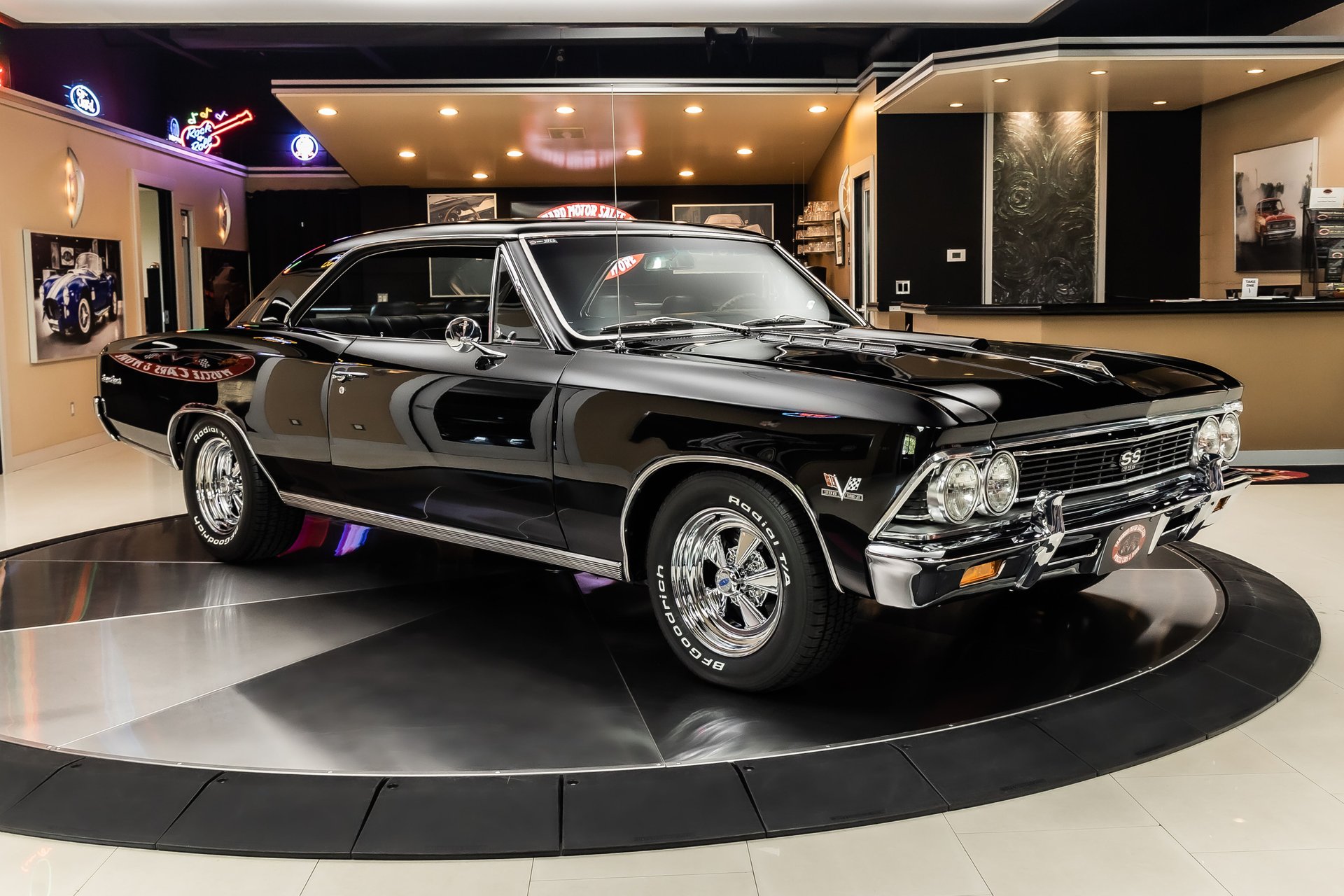The history of muscle cars is a fascinating journey, filled with both unforgettable successes and some head-scratching flops. While we’re thankful that certain cars like the DeLorean DMC, the Ford Pinto, and the Chevrolet Chevette have long faded into obscurity, there are others that left an indelible mark on the muscle car world. These were the cars that helped shape the industry and made muscle cars what they are today. It’s hard to forget the roar of their engines and the pure excitement they brought to the open road.
Some of these classic muscle cars were revolutionary in their design, while others were just the right combination of power and style that captured the imagination of car enthusiasts everywhere. Whether it was their aggressive performance, their distinctive look, or the thrill they offered to drivers, they all left a lasting impression. But unfortunately, time has not been kind to many of them. Car brands have changed, models have been discontinued, and some companies have even gone defunct.
It’s a sad thought that many of these legends may never see the light of day again. Some brands are no longer around, and the technology that made them so great has been left behind. However, muscle car fans have a way of holding onto hope. We dream of a future where these classic machines are brought back to life, whether through a modern reimagining or a fresh revival of the old-school designs we know and love.
Even if it seems impossible, the spirit of these muscle cars lives on in the hearts of car enthusiasts. Perhaps, one day, we’ll get to hear the growl of these iconic engines once more, tearing up the streets like they did in their prime.
10) Plymouth Barracuda The Muscle Car That Almost Had a Different Name

The Plymouth Barracuda is a car that holds a special place in muscle car history. While it may not be as famous as some of its counterparts like the Mustang or Camaro, it was an important part of the muscle car revolution in the 1960s.
What’s interesting is that the Barracuda wasn’t always going to be called that. In fact, before its release, it was rumored to be named the “Panda,” which would have given it a much softer and less aggressive name. Thankfully, the name Barracuda prevailed, and with it, muscle car history was forever changed.
When it first launched in 1964, the Barracuda was built on the Valiant’s wheelbase, which gave it a solid foundation. Engine options ranged from a 2.8-liter and 3.4-liter slant-six, to a 4.5-liter V8. The horsepower ranged from 101 to 180, and while it wasn’t the most powerful car on the market, it was still a solid performer. However, it was the later models that truly earned the Barracuda its legendary status.
The introduction of the Hemi engine turned the Barracuda into a true muscle car contender, allowing it to go head-to-head with the best in the industry. Its sleek design and powerful engine made it a favorite among the growing muscle car crowd in the 60s. The Barracuda wasn’t just fast, but it also looked stunning, with its aggressive styling and distinctive appearance.
There have been rumors over the years that the Barracuda might make a comeback, possibly under Dodge or FCA. While nothing has been confirmed, fans continue to hope that this iconic muscle car might one day return to the streets. For now, we can only wait and watch, but the Plymouth Barracuda will always be remembered as a true muscle car icon.
The Plymouth Barracuda, introduced in 1964, is a classic American muscle car that played a significant role in the automotive during the muscle car era. Initially launched as a fastback variant of the Plymouth Valiant, the Barracuda was designed to compete with the Ford Mustang, which debuted the same year. With its distinctive styling and performance capabilities, the Barracuda quickly gained popularity among enthusiasts and became an iconic nameplate in American automotive history.
The first-generation Barracuda, produced from 1964 to 1966, featured a unique and sporty design characterized by its fastback roofline and large rear window. This design set it apart from other cars of the time and gave it a distinctive appearance.
The Barracuda was available in various body styles, including a two-door hardtop and a convertible, appealing to buyers looking for both style and performance. The early models showcased a focus on aesthetics and performance, establishing the Barracuda as a serious contender in the growing pony car market.
Under the hood, the Barracuda offered a range of engine options to cater to different performance preferences. The base model came equipped with a 170 cubic inch (2.8-liter) inline-six engine, providing adequate power for daily driving. However, as the muscle car craze began to take hold, Plymouth introduced more powerful V8 options, including the 273 cubic inch (4.5-liter) and later the 318 cubic inch (5.2-liter) engines. These powerplants allowed the Barracuda to deliver thrilling acceleration and performance, appealing to enthusiasts looking for a fun driving experience.
In 1967, the Barracuda underwent a complete redesign, entering its second generation and further solidifying its status as a performance vehicle. The new design featured a longer and wider body, with a more aggressive stance that highlighted its sporty intentions. The second-generation Barracuda was available in various trim levels, including the sporty “Formula S” package, which included performance upgrades like a more powerful engine, improved suspension, and distinctive badging.
The most iconic model in the Barracuda lineup is undoubtedly the 1970-1974 third generation, which introduced the famous “Cuda” trim. This model is celebrated for its aggressive styling, wide body, and powerful engine options.
The 1970 Barracuda could be equipped with various high-performance engines, including the legendary 426 cubic inch (7.0-liter) HEMI V8 and the 440 cubic inch (7.2-liter) V8, producing upwards of 450 horsepower. This made the “Cuda” a formidable contender on the street and at the drag strip, establishing its place in muscle car history.
The Barracuda’s performance was further enhanced by its well-engineered suspension and handling characteristics. The car featured a front torsion bar suspension, providing a smooth ride while maintaining stability during aggressive driving.
With its rear leaf spring setup, the Barracuda delivers a comfortable driving experience, making it suitable for both daily use and spirited driving. The combination of power and handling made the Barracuda a popular choice among enthusiasts looking for a versatile performance car.
Inside, the Barracuda offered a driver-focused interior with a sporty layout. High-quality materials adorned the cabin, and options included bucket seats, premium audio systems, and an array of comfort features. The Barracuda’s interior was designed to provide a comfortable and engaging driving experience, with ample space for both driver and passengers. This blend of performance and comfort helped make the Barracuda a well-rounded choice for buyers during the muscle car era.
As the 1970s progressed, the automotive began to change, influenced by rising fuel prices and stricter emissions regulations. The Barracuda’s fourth generation, produced from 1974 to 1979, reflected these changes with a more conservative design and a focus on fuel efficiency.
While the performance options were scaled back, the Barracuda continued to appeal to buyers looking for a stylish and affordable vehicle. The muscle car segment was declining, leading to a decrease in production and the eventual discontinuation of the Barracuda nameplate.
Despite its production ending in 1974, the Plymouth Barracuda has maintained a strong following among collectors and enthusiasts. The car’s unique styling, performance legacy, and limited production numbers contribute to its desirability in the classic car market. Many enthusiasts appreciate the opportunity to restore and modify Barracudas, with a robust aftermarket support network providing parts and upgrades for various models.
The Barracuda’s significance in automotive history is evident at car shows and events, where enthusiasts showcase their well-preserved examples. Its association with the muscle car movement and its distinctive design make it a favorite among fans of American automotive culture. The Barracuda’s presence in popular culture, including films and television, further solidifies its status as an iconic American muscle car.
Restoration projects for the Barracuda are common among enthusiasts, as many seek to bring these classic cars back to their original glory. Owners often modify their Barracudas to enhance performance or personalize their vehicles. The availability of aftermarket parts makes it feasible for enthusiasts to maintain and upgrade their cars, ensuring that the Barracuda’s legacy continues to thrive.
The Plymouth Barracuda is a classic muscle car that has left an indelible mark on American automotive history. Its blend of performance, style, and affordability made it a popular choice during the muscle car era.
The Barracuda’s distinctive design, powerful engine options, and comfortable interior contribute to its enduring appeal among collectors and enthusiasts. As a symbol of American automotive ingenuity, the Barracuda remains a celebrated piece of automotive history that continues to grab enthusiasts today.
The Plymouth Barracuda’s significance in the automotive is often highlighted by its impact on car culture and the muscle car segment. Its unique styling and performance credentials have made it a sought-after model among classic car enthusiasts, ensuring that it remains a cherished part of American automotive history. The Barracuda stands as a testament to an era defined by bold designs and powerful performance, embodying the spirit of the American muscle car movement.
9) Pontiac GTO The Original Muscle Car That Deserves a Comeback
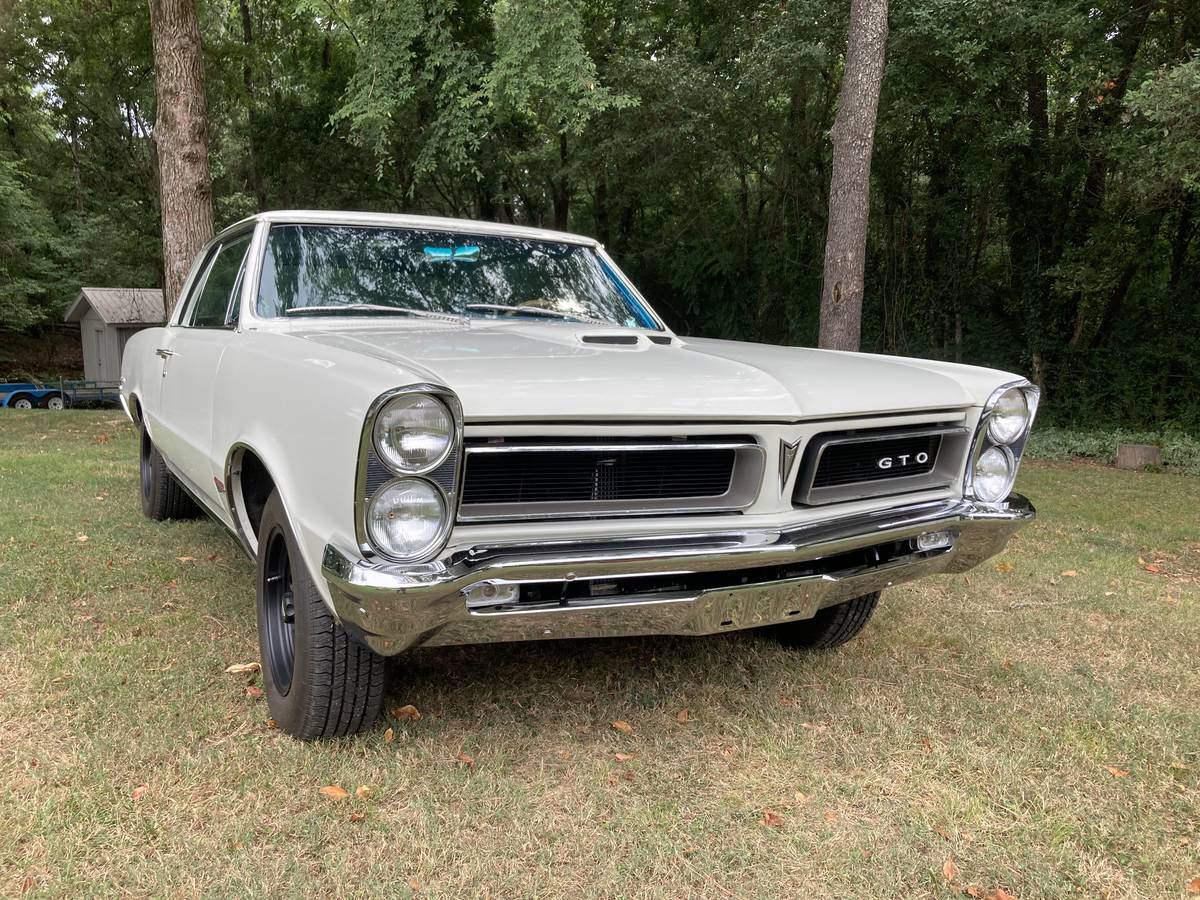
The Pontiac GTO is a name that every muscle car enthusiast knows. Introduced in 1964, the GTO was a groundbreaking vehicle that is widely considered the car that kickstarted the muscle car era. Its introduction marked the beginning of a high-performance revolution in the American automobile industry, with the Detroit Three—Ford, Chrysler, and General Motors—competing to offer the most powerful cars.
The original GTO was a beast under the hood. It offered engine options of a 6.4-liter and 6.8-liter V8, delivering an impressive 325 and 348 horsepower respectively. These engines helped the GTO stand out, making it one of the most powerful cars of its time. It was a car that combined power with style, capable of thrilling acceleration and speed. The GTO quickly became a favorite among car enthusiasts and solidified its reputation as the muscle car that set the standard for all others.
However, the GTO’s reign came to an end in the 1970s, when it fell victim to the oil embargo and changing consumer demands. Despite its legendary status, the GTO disappeared from the market for a long time. Though it saw a short-lived revival between 2004 and 2006, the rebirth wasn’t as successful or impactful as the original model.
Today, the original GTO—nicknamed “The Goat”—is still remembered fondly, and muscle car fans would gladly welcome a true comeback of this legendary vehicle. With its history, raw power, and iconic design, the Pontiac GTO deserves to be revived for a new generation of car lovers who crave the power and prestige that it once delivered.
8) Chevrolet Monte Carlo A Classic Muscle Car That Deserves a Comeback
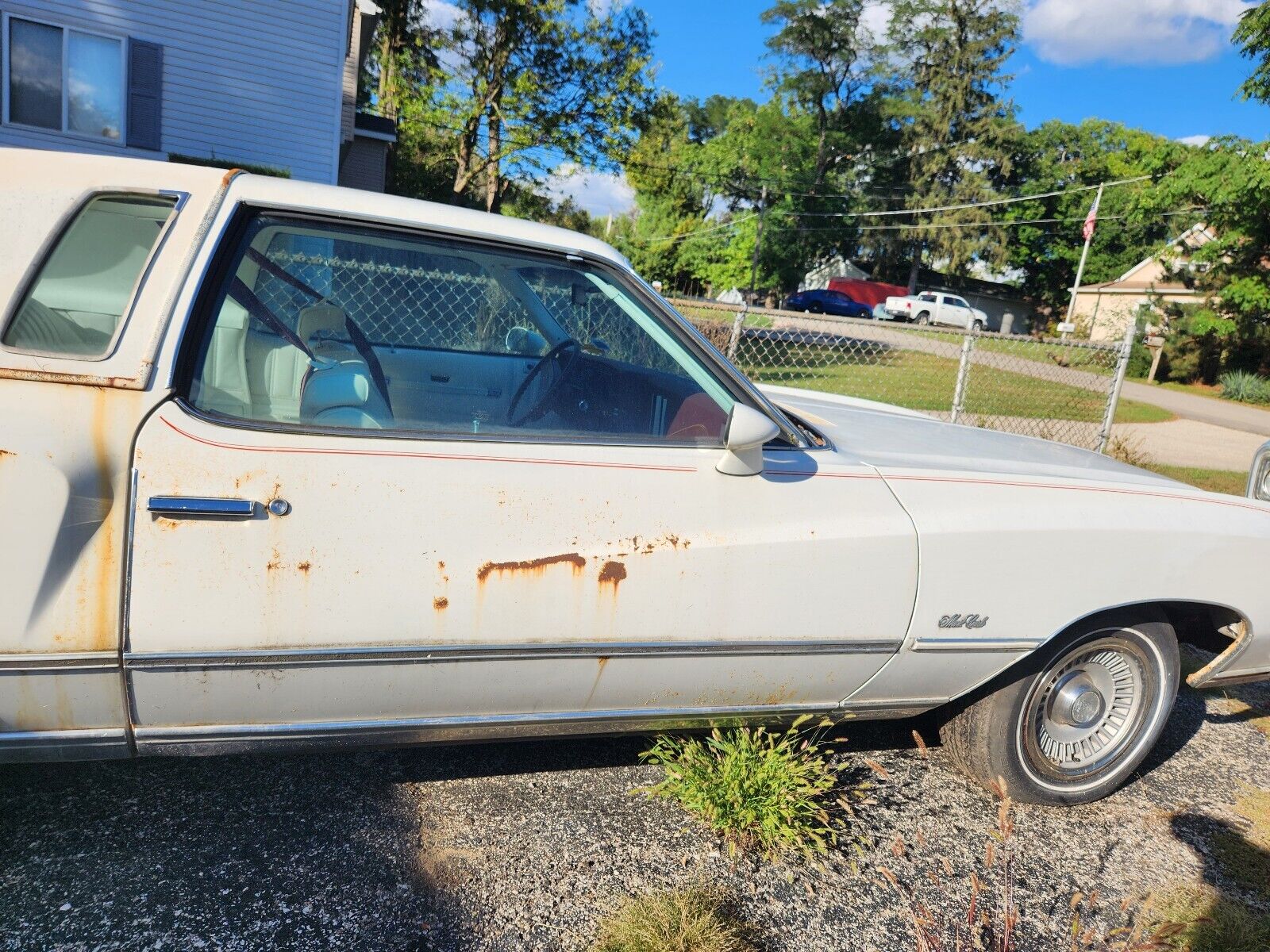
The Chevrolet Monte Carlo is one of those classic cars that lived in the shadow of other muscle cars but still holds a special place in the hearts of car enthusiasts. Produced intermittently from 1969 to 2007, the Monte Carlo evolved from a muscle car to a more luxury-oriented vehicle in its later years. But it was the early models, especially the 1970 Monte Carlo SS454, that gave the car its reputation as a true racing machine.
The 1970 SS454 trim, with its 7.5-liter turbo-Jet V8 engine, was a standout. Despite its limited sales success, it earned respect on the NASCAR tracks and among muscle car fans. With 365 horsepower, the SS454 had the kind of power that could make it a force on the road. Unfortunately, as the years went by, the Monte Carlo moved away from its muscle car roots, and the big V8 engine was phased out, replaced by smaller V6 options.
The Monte Carlo was often marketed more as a luxury vehicle than a muscle car. This shift in focus led to its decline as a performance vehicle, with its final generation being more of a passenger car than a road killer. But many car enthusiasts still remember the Monte Carlo for its muscular early years and the raw power it once offered.
A modern-day revival of the Monte Carlo could be a real winner. With a rear-wheel-drive setup and the option for a powerful V8 engine, the Monte Carlo could reclaim its place as a road warrior. Fans of the old SS454 would love to see a return to its muscle car glory days, bringing back the classic blend of style, power, and performance that made the Monte Carlo so memorable.
7) Dodge Charger Daytona A Muscle Car Icon That Deserves a Comeback
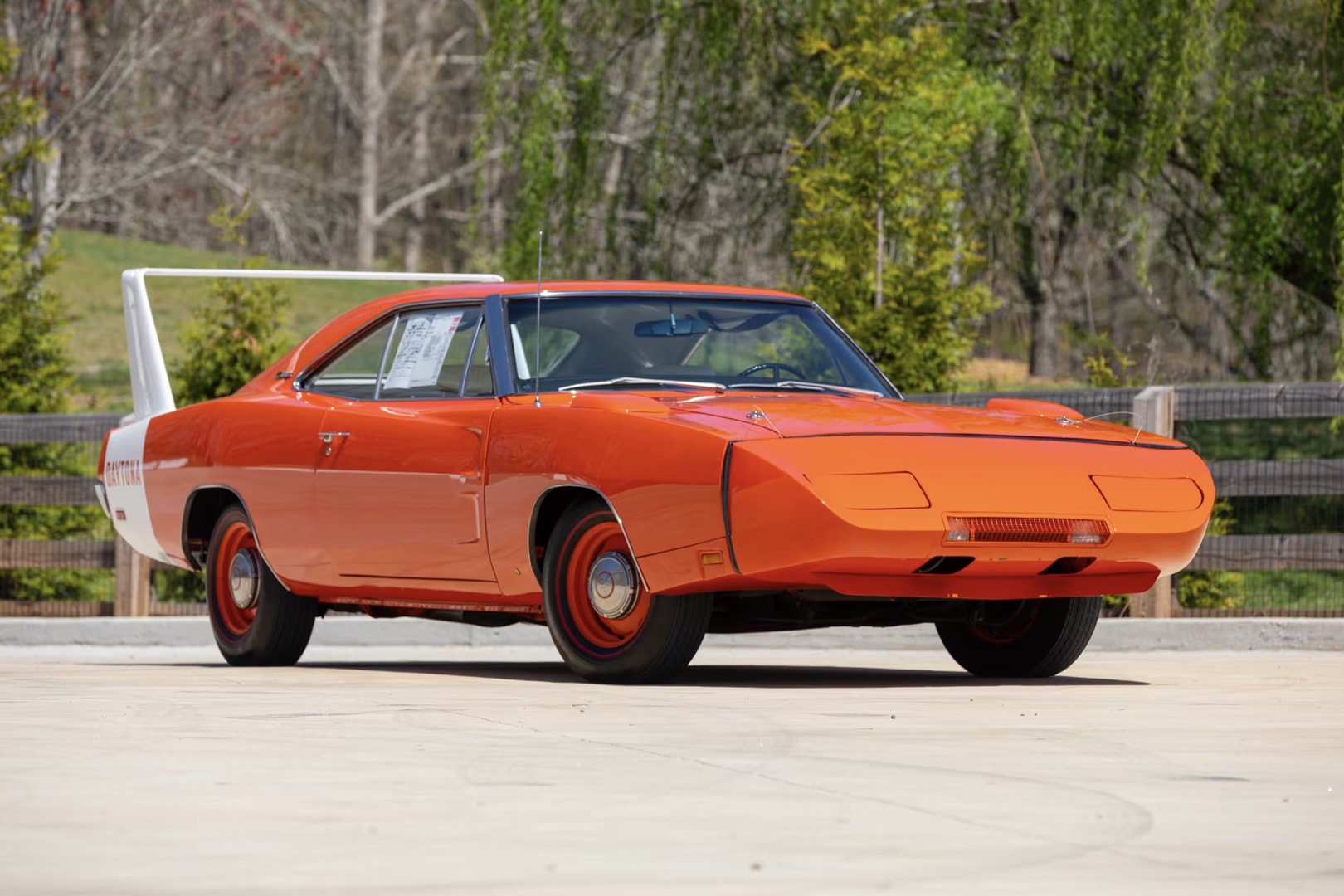
The Dodge Charger Daytona is one of the most iconic muscle cars in history, known for its aggressive looks, its powerful engine, and, of course, its massive NASCAR-style rear wing. First introduced in 1969, the Daytona was designed with one thing in mind: speed. It wasn’t just a pretty face—it was a car built for racing, and it made a big impact in the muscle car world.
The original 1969 Charger Daytona came with a Hemi V8 engine that could reach an impressive top speed of 217 mph, thanks in large part to its aerodynamic body. It was not only fast but also looked the part, with that distinctive rear wing that made it stand out from other muscle cars. Only 504 of these were ever made, making it a rare and highly sought-after classic today. Its bold design and powerful performance cemented its place in automotive history.
While the Charger Daytona made a few more appearances in the years that followed, the later versions (from 2006 to 2017) were largely just trim packages. They offered some suspension tweaks and cosmetic upgrades, but they didn’t quite live up to the original in terms of performance and innovation. Fans of the Daytona have been waiting for a true comeback, one that brings back the roaring Hemi V8 and the unforgettable look of the 1969 model.
Imagine a modern-day Charger Daytona with that same sleek aerodynamic body, the iconic rear wing, and the power of a modern Hemi engine. If Dodge were to re-release the original Daytona with updated technology and performance, there would be a frenzy of customers eager to get their hands on it. For now, we can only hope that this classic muscle car will return to its former glory.
The Dodge Charger Daytona is a legendary nameplate in American automotive history, known for its distinctive styling and high-performance capabilities. Introduced in the late 1960s, the Daytona was developed to dominate NASCAR racing and solidify Dodge’s presence in the competitive muscle car market. With its aggressive design, powerful engine options, and aerodynamic enhancements, the Charger Daytona has become an iconic representation of American muscle and racing heritage.
The first-generation Charger was launched in 1966, but the Daytona variant specifically emerged in 1969 as a modified version designed for speed and aerodynamics. The standout feature of the Daytona was its unique aerodynamic bodywork, which included a distinctive nose cone and a massive rear wing. These modifications not only gave the car an aggressive appearance but also significantly improved its aerodynamics, making it one of the fastest cars of its time. The Daytona was designed to break speed records on the racetrack while appealing to the growing muscle car enthusiast market.
Under the hood, the Dodge Charger Daytona offered a range of powerful engine options. The standard engine was a 383 cubic inch (6.3-liter) V8, delivering ample horsepower for a thrilling driving experience. However, enthusiasts could opt for the larger 440 cubic inch (7.2-liter) V8, which provided even more power and performance. The ultimate engine choice was the legendary 426 cubic inch (7.0-liter) HEMI V8, known for its incredible horsepower and torque. This engine option solidified the Daytona’s status as a true muscle car, capable of delivering exhilarating acceleration and performance on both the street and the track.
The Daytona’s performance on the racetrack was impressive, with the car achieving significant success in NASCAR. Its aerodynamic enhancements, combined with its powerful engine options, allowed the Daytona to dominate the competition. Notable drivers, including Richard Petty, piloted the Charger Daytona in various races, leading to numerous victories. The Daytona’s racing pedigree contributed to its allure among car enthusiasts, further establishing its place in automotive history.
In addition to its racing success, the Charger Daytona offered impressive handling characteristics for a muscle car. The car featured a well-tuned suspension system that provided a balance between ride comfort and performance. The combination of power steering and responsive braking contributed to a driving experience that was both thrilling and manageable. This made the Daytona suitable for spirited driving on winding roads as well as high-speed racing.
Inside, the Charger Daytona provided a driver-focused interior with a sporty design. The cabin featured high-quality materials, and the layout was designed to prioritize functionality and comfort. Options included bucket seats, a rally gauge cluster, and various audio systems, allowing buyers to customize their driving experience. The interior space was ample, providing comfort for both driver and passengers, making the Daytona practical for everyday use.
As the automotive evolved in the early 1970s, the muscle car market began to decline due to rising fuel prices and changing consumer preferences. The Dodge Charger Daytona saw its production end in 1974, marking the close of an era for this iconic model. Despite its relatively short production run, the Daytona left a lasting legacy and remains a highly sought-after classic car today.
The Dodge Charger Daytona has become a symbol of American automotive culture, celebrated for its unique styling and performance heritage. Collectors and enthusiasts cherish well-preserved examples of the Daytona, and its presence at car shows and events highlights its significance in automotive history. The car’s status as a racing icon continues to resonate, with many enthusiasts appreciating its connection to the golden age of muscle cars.
Restoration projects for the Daytona are common among enthusiasts, as many seek to bring these classic cars back to their original glory. Owners often modify their Daytonas to enhance performance or personalize their vehicles. The availability of aftermarket parts ensures that the Daytona’s legacy can be maintained and celebrated by future generations of car enthusiasts.
In popular culture, the Dodge Charger Daytona has made numerous appearances in films, television shows, and video games, further cementing its status as an automotive icon. Its aggressive design and performance capabilities have made it a favorite subject among automotive enthusiasts and collectors. The Charger Daytona’s influence extends beyond the racetrack, representing a spirit of freedom and adventure that resonates with car lovers.
The Dodge Charger Daytona is a classic muscle car that has left an indelible mark on American automotive history. Its combination of distinctive design, powerful engine options, and racing pedigree has made it a beloved choice among collectors and enthusiasts. The Daytona’s legacy as a performance icon continues to be celebrated, making it a cherished piece of automotive heritage that grabs enthusiasts to this day.
The Dodge Charger Daytona’s significance in automotive history is reflected in its impact on car culture and the muscle car segment. Its unique design and performance capabilities have made it a sought-after model among classic car enthusiasts, ensuring that it remains a cherished part of American automotive heritage. The Charger Daytona stands as a testament to an era defined by bold designs, powerful engines, and a passion for speed, embodying the spirit of American muscle and racing.
6) Ford Torino The Muscle Car That Deserves a Comeback
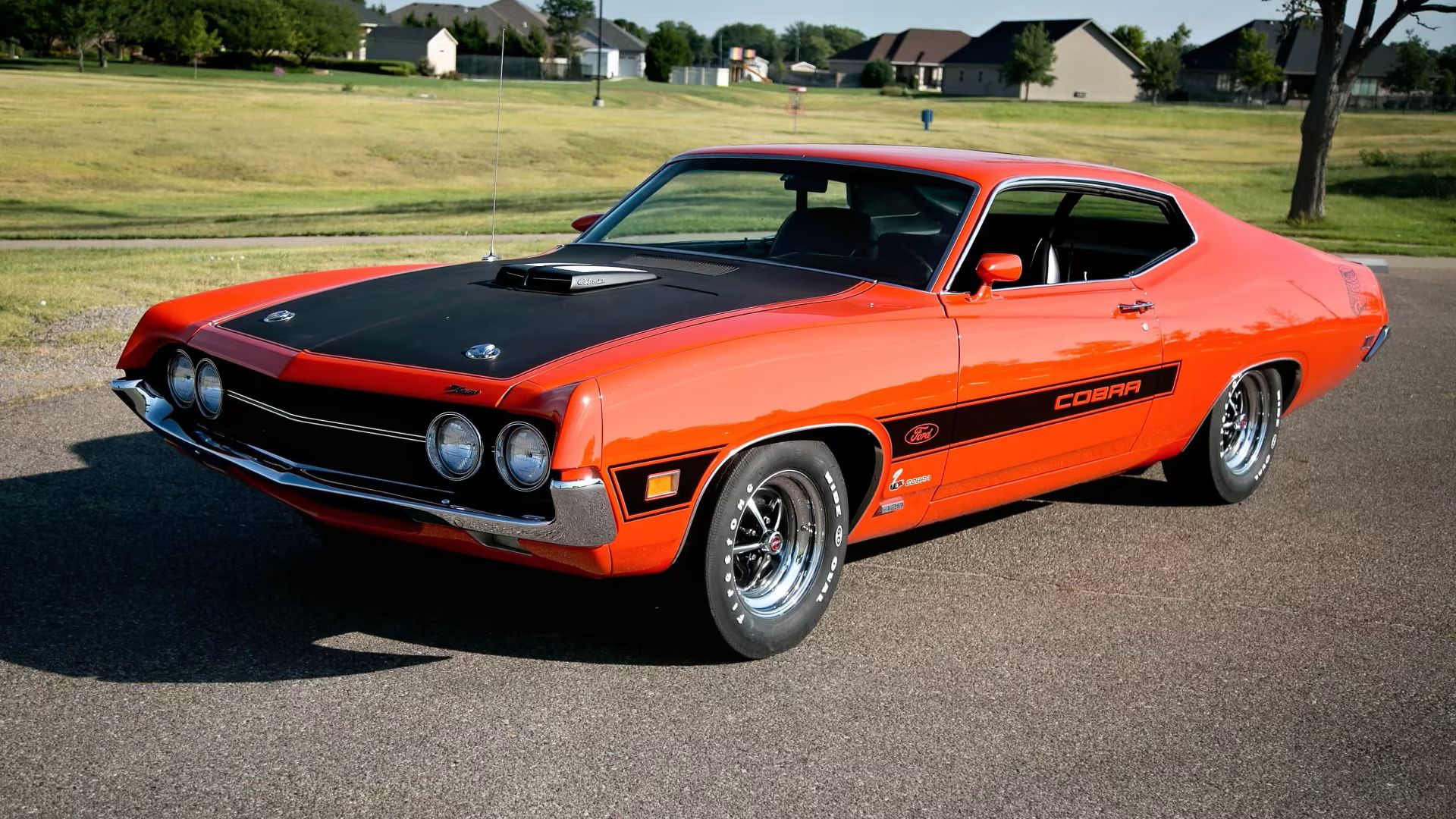
The Ford Torino, although not as famous as the Mustang, was a serious contender in the muscle car world during its heyday. Produced from 1968 to 1976, the Torino offered a unique blend of power, luxury, and design that many muscle car fans still appreciate today. The Torino was known for its larger, more luxurious size compared to other muscle cars, but it certainly didn’t lack the muscle under the hood.
One of the standout features of the Torino was its engine options, particularly the performance variants. The 6.4-liter and 7.0-liter Cobra Jet V8 engines were beasts, delivering 360 and 375 horsepower, respectively.
These engines gave the Torino the raw power to compete with other muscle cars from GM and Chrysler, making it a serious contender in the 1960s and 70s muscle car market. While the Mustang focused more on speed and agility, the Torino had the power and presence that set it apart from other vehicles in Ford’s lineup.
The Torino’s combination of performance and luxury made it appealing to a wide range of car enthusiasts. Its beautiful design, with sleek lines and bold features, added to its allure. Despite its relatively short production run, the Torino still holds value and fond memories for many muscle car fans today. It’s a classic that embodies the spirit of an era.
If Ford were to bring back the Torino today, it could easily expand the company’s muscle car lineup. A retro-inspired modern design, combined with powerful performance, would make the Torino a hit among enthusiasts and collectors alike. With retro-styled cars becoming popular again, the Torino could easily fit into Ford’s modern muscle car offerings. It’s a revival many fans would love to see.
5) Mercury Cougar The Luxury Pony Car That Deserves a Comeback
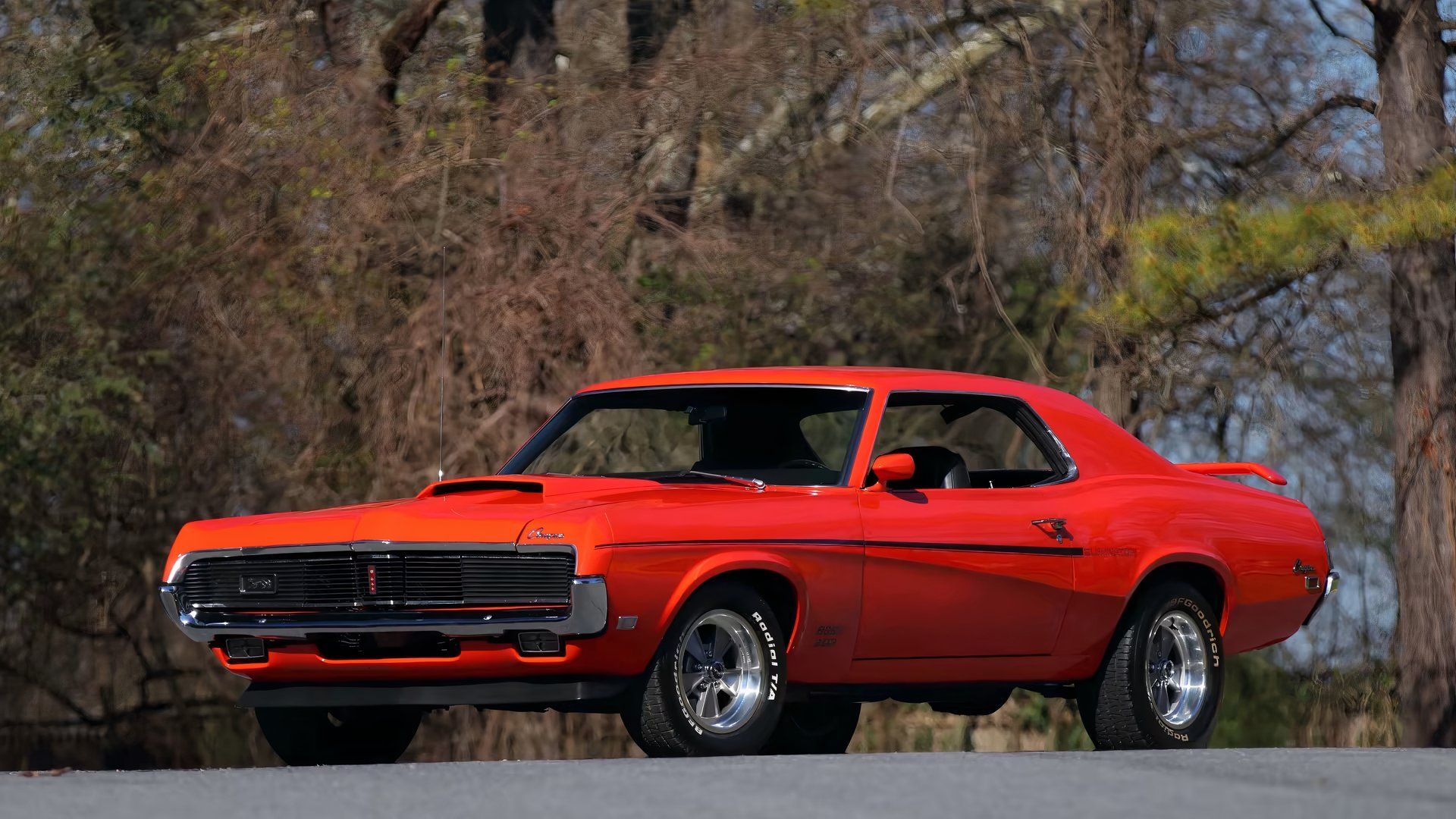
The Mercury Cougar, introduced in 1967, was designed as the more luxurious cousin of the iconic Ford Mustang. Built on a stretched Mustang platform, it offered a refined take on the pony car formula. While the Mustang was the more rugged, performance-focused vehicle, the Cougar was aimed at buyers looking for something with a bit more style and sophistication. The Cougar was powered exclusively by V8 engines, ensuring that it still had the power to back up its looks.
The Mercury Cougar quickly became a hit, earning the title of Mercury’s bestselling car ever, with nearly 3 million units produced over the years. Its dual-grille design remains one of the most recognizable and iconic features of the Cougar, giving it a sleek and aggressive appearance that still turns heads today. Many would argue that the Cougar actually looked as good, if not better, than its Ford counterpart, the Mustang, thanks to its luxurious touches and refined styling.
While the Cougar was originally a pony car, it evolved over the years into a variety of different body styles and designs, losing some of its original identity. By the time it was discontinued, it had moved away from the muscle car category entirely, but it was the first-generation Cougar, with its V8 power and elegant design, that captured the hearts of many car enthusiasts.
Considering the Mustang’s long and almost eternal production run, it would be exciting to see a modern-day Cougar return to the streets. Imagine a luxury pony car with sleek, modern styling and a powerful engine that honors the Cougar’s rich legacy. For many fans, the return of the Cougar would be a dream come true, offering a blend of elegance, performance, and the same undeniable appeal that made it a hit in the first place.
4) Pontiac Firebird A Classic Muscle Car Ready for a Comeback

Although Pontiac was retired by GM, the Firebird remains one of the most iconic muscle cars in automotive history. With its long run from 1967 to 2002, the Firebird earned a devoted following, and its potential for a comeback is something that many car enthusiasts dream of. In fact, given that the Firebird shares its platform with the popular Chevrolet Camaro, there’s a strong case to bring it back into production.
The Pontiac Firebird was a fierce competitor in the muscle car world, known for its stylish looks and powerful performance. The Firebird’s final model rolled off the assembly line in 2002, but it’s not hard to imagine how well the car could fit into the modern muscle car market if GM decided to revive it. With the Camaro’s current success and the growing demand for retro-styled vehicles, a reimagined Firebird could capture the hearts of both classic muscle car lovers and new-generation buyers.
A new Firebird would likely benefit from the same powerful engine options and solid underpinnings that the Camaro enjoys. Think of it: a retro-inspired design with the performance capabilities of the Camaro, from its V6 engines to its potent V8 options. This combination would make the Firebird a true powerhouse, bringing back the fiery spirit that made it famous in the first place.
A revival of the Firebird would not only celebrate its legendary status, but also create a buzz in the automotive world. If GM were to give the green light, there’s no doubt that this classic muscle car would be a huge hit with car enthusiasts everywhere.
3) AMC Javelin A Muscle Car Gem That Deserves a Comeback
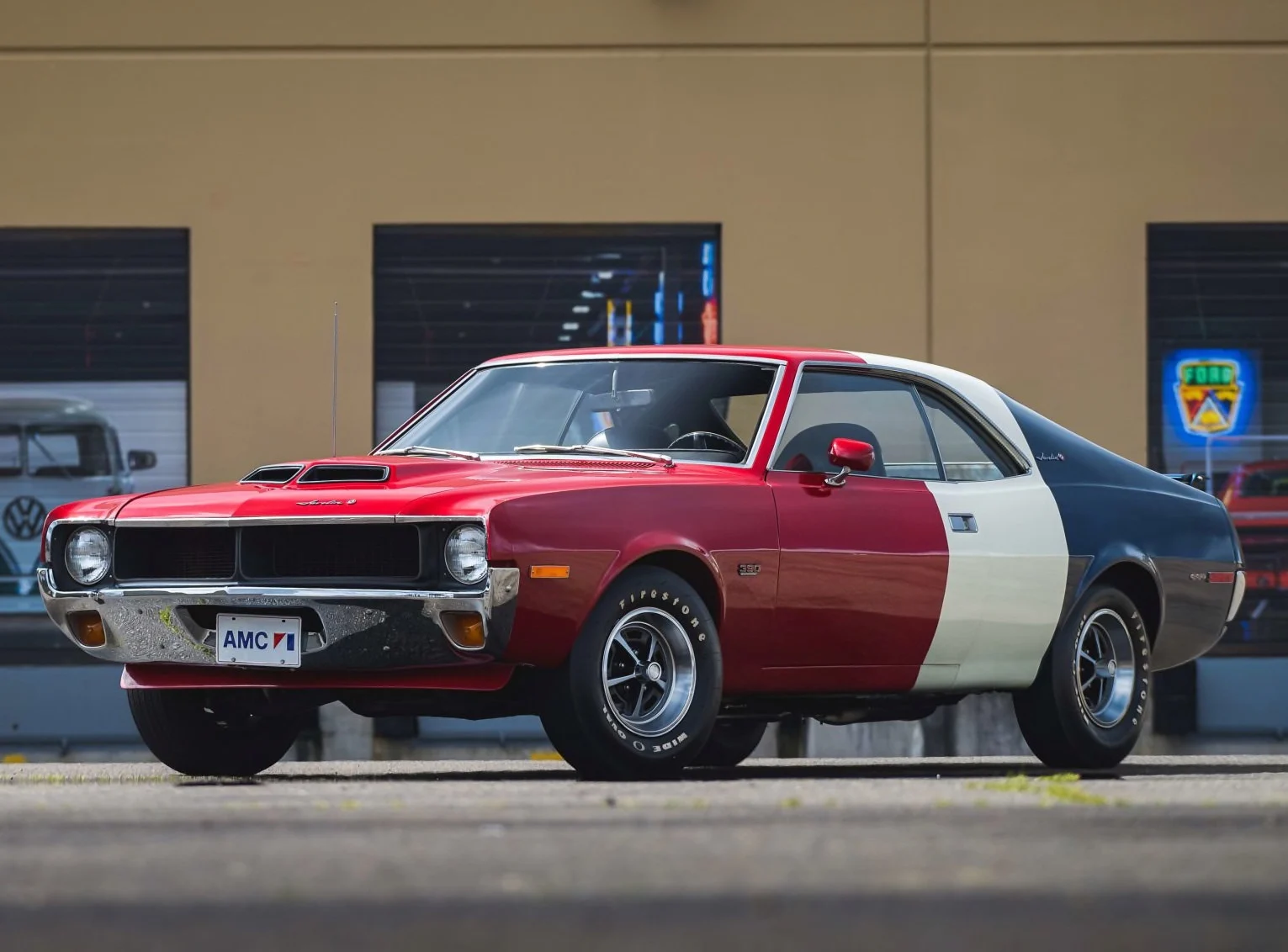
The AMC Javelin was a standout in the muscle car era, offering a unique blend of style and power that set it apart from the more common Mustangs, Camaros, and Firebirds of its time. Produced in two distinct generations from 1968 to 1974, the Javelin quickly earned a reputation as a well-designed and affordable muscle car. Its smooth, semi-fastback roof design made it look sleek and different, giving it a special place in the hearts of car enthusiasts.
When it was first introduced, the Javelin was an inexpensive option that didn’t compromise on power. The 6.5-liter V8 engine, which pushed out 315 horsepower, made the Javelin a legitimate muscle car contender. For those who wanted something less powerful, AMC also offered smaller engines, catering to a broader audience. This balance of power and affordability is one of the reasons the Javelin was so popular and why it continues to be remembered fondly by muscle car fans.
If AMC were to revive the Javelin, it would likely be welcomed with open arms. Car enthusiasts today would love to see a modern version that maintains the car’s original spirit. Imagine a zippy, low-frills ride that still stands out from the crowd, just like the original. With today’s advancements in technology, a modern Javelin could take the best aspects of the classic design—its powerful engine options and distinctive look—and update them with modern performance and safety features.
The AMC Javelin was never about being flashy or showing off; it was about delivering an enjoyable driving experience in a unique, stylish package. If the Javelin made a comeback, it would offer a refreshing alternative in muscle cars, and car enthusiasts would surely embrace it.
The AMC Javelin is a classic American muscle car produced by the American Motors Corporation (AMC) from 1967 to 1974. Known for its unique styling and performance capabilities, the Javelin was designed to compete with other pony cars of the era, such as the Ford Mustang and Chevrolet Camaro. With its combination of performance, affordability, and distinct design, the Javelin carved out a niche in the competitive muscle car market and remains a beloved choice among collectors and enthusiasts today.
When the Javelin was introduced in 1967, it featured a long hood, short rear deck, and an aggressive stance that highlighted its sporty intentions. The initial design was a two-door coupe with a modern aesthetic, characterized by a wide grille and sculpted body lines.
The Javelin’s styling was a departure from AMC’s traditional designs, showcasing a more performance-oriented approach that appealed to younger buyers seeking excitement on the road.
Under the hood, the Javelin offered a variety of engine options to cater to different performance preferences. The base model was equipped with a 232 cubic inch (3.8-liter) inline-six engine, providing adequate power for everyday driving.
However, performance enthusiasts could opt for the more powerful V8 options, including the 290 cubic inch (4.8-liter) V8 and the 343 cubic inch (5.6-liter) V8. The introduction of the 390 cubic inch (6.4-liter) V8 in 1969 further solidified the Javelin’s performance credentials, offering up to 325 horsepower and establishing it as a serious contender in the muscle car segment.
The AMC Javelin was known for its impressive handling characteristics, thanks to its well-engineered suspension system. The car featured a front disc brake setup, enhancing stopping power and providing drivers with greater control.
The performance-oriented suspension included coil springs in the front and leaf springs in the rear, allowing for a comfortable ride without sacrificing agility. This combination of handling and power made the Javelin enjoyable to drive, whether on winding roads or at the drag strip.
In 1970, AMC introduced the Javelin’s performance-oriented version, the Javelin AMX. This model was designed to compete directly with high-performance pony cars and featured a shorter wheelbase, more aggressive styling, and a focus on performance.
The AMX was equipped with the powerful 390 V8 engine, delivering thrilling acceleration and making it a favorite among enthusiasts. The AMX also featured unique styling elements, such as a dual exhaust system and distinctive badging, enhancing its sporty appeal.
As the years progressed, the Javelin underwent design changes to keep up with shifting consumer preferences and market trends. The second generation, introduced in 1971, featured a more rounded design with a longer wheelbase. This iteration retained the sporty character of the original while offering improved comfort and interior space. The availability of various trim levels and engine options allowed buyers to customize their Javelin to match their performance desires and budget.
The interior of the AMC Javelin was designed with a focus on driver comfort and functionality. The cabin featured a driver-oriented layout, with easy access to controls and a sporty dashboard design. Options included bucket seats, premium audio systems, and a variety of interior finishes. Rear-seat space was adequate for passengers, making the Javelin a practical choice for families and those looking for a stylish yet functional vehicle.
Despite its performance pedigree, the Javelin faced challenges in the competitive automotive market during the early 1970s. As fuel prices rose and insurance costs increased, consumer preferences shifted towards more fuel-efficient vehicles. AMC responded by introducing smaller engines and emphasizing the Javelin’s affordability, but the muscle car segment began to decline. The Javelin continued to evolve, but by 1974, production ended, marking the close of an era for this iconic model.
Today, the AMC Javelin has become a classic car sought after by collectors and enthusiasts. Its unique design, performance capabilities, and limited production numbers contribute to its desirability in the classic car market. Many enthusiasts appreciate the opportunity to restore and modify Javelins, with a robust aftermarket support network providing parts and upgrades for various models.
The Javelin’s significance in automotive history is recognized at car shows and events, where enthusiasts showcase their well-preserved examples. Its association with the muscle car movement and its distinctive styling make it a favorite among fans of American automotive culture. The Javelin’s presence in popular culture, including appearances in films and television, further solidifies its status as a classic American icon.
Restoration projects for the Javelin are common among enthusiasts, as many seek to bring these classic cars back to their original glory. Owners often modify their Javelins to enhance performance or personalize their vehicles. The availability of aftermarket parts makes it feasible for enthusiasts to maintain and upgrade their cars, ensuring that the Javelin’s legacy continues to thrive.
The AMC Javelin is a classic American muscle car that has left a lasting impact on automotive history. Its blend of performance, style, and affordability made it a popular choice during the muscle car era. The Javelin’s distinctive design, powerful engine options, and comfortable interior contribute to its enduring appeal among collectors and enthusiasts. As a symbol of American automotive ingenuity, the Javelin remains a celebrated piece of automotive history that continues to grab enthusiasts today.
2) Ford Galaxie 7-Litre A Forgotten Muscle Car That Deserves a Comeback
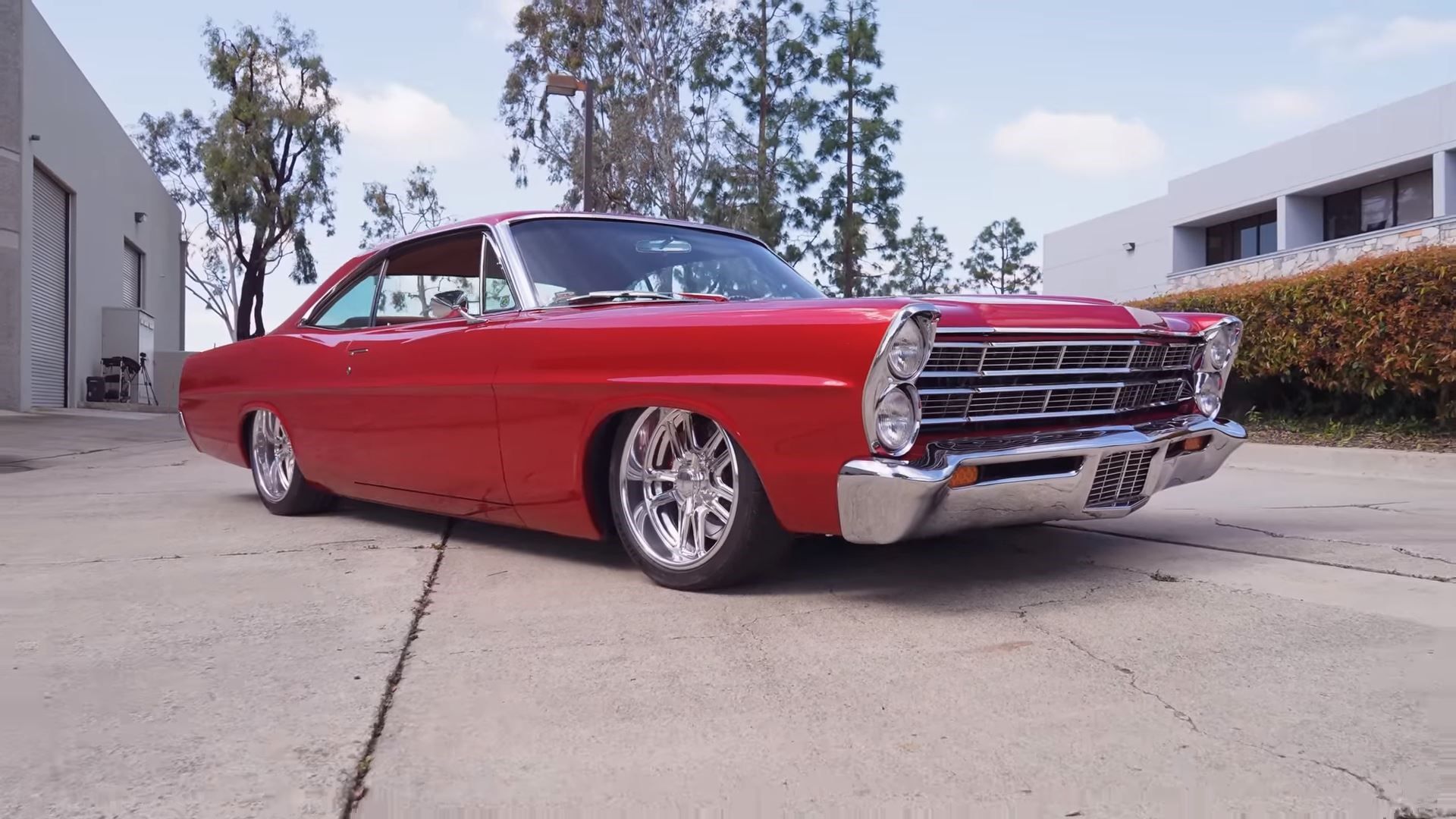
The Ford Galaxie 7-Litre may not be one of the most talked-about muscle cars from the 1960s, but this special model deserves recognition for its impressive performance and limited production. Introduced in 1966, the Galaxie 7-Litre was a limited-edition muscle car that stood out not just for its power, but for its stylish features and comfortable ride.
At first glance, the Galaxie might have seemed like an ordinary family sedan, but under the hood was where the magic happened. Ford equipped it with a massive 7.0-liter V8 engine that churned out a remarkable 345 horsepower. This engine gave the car an unmistakable roar and plenty of muscle to back up its bold performance. The Galaxie 7-Litre could accelerate with power and grace, making it a true sleeper car for those in the know.
Ford went all out when designing the 7-Litre trim, adding premium features to make it the top-of-the-line version of the Galaxie. It came with bucket seats, a heavy-duty suspension, air conditioning, and anything else that could be powered at the time. Special color options and shiny 7-Litre badges made it stand out even more, signaling to onlookers that this was no ordinary car.
Unfortunately, the Galaxie 7-Litre was only produced for one year, which makes it a rare gem in the muscle car world. If Ford ever brought back the Galaxie 7-Litre today, it would undoubtedly cause a frenzy among collectors and muscle car enthusiasts. With modern technology and design, the Galaxie could be reimagined as a blend of classic performance and contemporary comfort. If revived, this iconic car would no doubt make waves in today’s muscle car market.
The Ford Galaxie is a classic full-size automobile that was produced by Ford from 1959 to 1974. Renowned for its sleek styling and spacious interior, the Galaxie became a symbol of American automotive culture during the 1960s. With its blend of power, comfort, and distinctive design, the Galaxie appealed to a wide range of buyers, making it a popular choice for families and performance enthusiasts alike. Its legacy continues to resonate among collectors and car enthusiasts today.
The Galaxie was introduced as a high-end model within Ford’s lineup, positioned above the Fairlane and designed to compete with other full-size sedans like the Chevrolet Impala. The initial design featured a distinctive sloping roofline and a long hood, giving it an elegant and sporty appearance. The Galaxie was available in various body styles, including two-door hardtops, convertibles, and four-door sedans, catering to diverse consumer preferences.
One of the defining features of the Ford Galaxie was its impressive range of engine options. Early models were equipped with a variety of V8 engines, starting with a 352 cubic inch (5.8-liter) V8 that produced 300 horsepower.
As performance expectations grew in the 1960s, Ford introduced larger engines, including the iconic 390 cubic inch (6.4-liter) V8 and the formidable 427 cubic inch (7.0-liter) V8, capable of delivering over 400 horsepower. This performance-oriented approach made the Galaxie a popular choice among muscle car enthusiasts.
In terms of handling and ride comfort, the Galaxie featured a well-tuned suspension system that provided a smooth and stable driving experience. The car’s design included a unibody construction, which contributed to its rigidity and overall handling characteristics.
The Galaxie’s wide stance and longer wheelbase enhanced stability, making it suitable for both city driving and long highway journeys. Drivers appreciated the balance between comfort and performance, making it an ideal vehicle for various driving scenarios.
The interior of the Ford Galaxie was spacious and designed with comfort in mind. High-quality materials adorned the cabin, and seating options included plush bench seats or optional bucket seats in performance-oriented models. The Galaxie’s interior layout was driver-focused, with easy access to controls and an array of convenience features, such as air conditioning and premium audio systems. Ample rear-seat legroom made it a practical choice for families, allowing passengers to travel in comfort.
During the 1960s, the Galaxie became a popular choice for motorsports, particularly in NASCAR racing. Its aerodynamic design and powerful engine options made it a competitive contender on the racetrack.
Notable drivers, including legends like Richard Petty, piloted the Galaxie in various races, further cementing its status in automotive history. The car’s performance capabilities on the track translated to street performance, appealing to consumers who desired a taste of racing heritage in their vehicles.
The Galaxie’s design evolved throughout its production run, reflecting changing automotive trends and consumer preferences. The second generation, introduced in 1965, showcased a more streamlined appearance with a wider grille and rounded edges. This design evolution contributed to the car’s modern aesthetic while maintaining its classic appeal. The introduction of the sporty Galaxie 500 and Galaxie 500 XL further enhanced the model’s reputation for performance and style.
As the 1970s approached, the automotive shifted due to changing regulations, fuel prices, and consumer preferences. The Galaxie underwent a redesign for its fifth generation, featuring a more conservative and elongated design.
While performance options were scaled back, the Galaxie continued to provide a comfortable and spacious ride, appealing to buyers seeking practicality over raw power. The emphasis on comfort and reliability helped the Galaxie maintain its popularity during this transitional period.
Despite its production ending in 1974, the Ford Galaxie has retained a dedicated following among collectors and enthusiasts. The car’s classic styling and performance legacy have made it a sought-after vehicle in the classic car market. Many enthusiasts appreciate the opportunity to restore and modify Galaxies, as a robust aftermarket support network offers parts and upgrades for various models.
The Galaxie’s historical significance is reflected in its appearances in popular culture, including movies and television shows. Its status as a quintessential American car has made it a favorite subject among automotive enthusiasts and collectors. Car shows and events often feature well-maintained Galaxies, allowing fans to admire their timeless design and performance capabilities.
In terms of restoration, many enthusiasts seek to preserve the Galaxie’s classic features while enhancing its performance. Common modifications include engine upgrades, suspension enhancements, and interior restorations, allowing owners to tailor the vehicle to their preferences. The availability of parts and resources for restoration projects ensures that the Galaxie’s legacy can be celebrated for generations to come.
The Ford Galaxie stands as a testament to the golden age of American automobiles, representing a time when full-size cars dominated the market. Its blend of style, comfort, and performance captured the essence of the era, making it a beloved classic among automotive enthusiasts. The Galaxie’s enduring appeal is a reminder of the impact that well-designed and powerful cars can have on the automotive.
The Ford Galaxie’s significance in automotive history cannot be overstated. Its role in the muscle car movement and its influence on design and performance trends during the 1960s and 1970s continue to be celebrated by collectors and enthusiasts. The Galaxie remains a symbol of American automotive ingenuity, embodying the spirit of an era defined by bold design and powerful performance.
The Ford Galaxie is a classic full-size car that has left an indelible mark on American automotive history. With its stylish design, impressive engine options, and spacious interior, the Galaxie catered to a wide range of buyers. Its legacy as a muscle car and a symbol of American culture endures, making it a favorite among collectors and enthusiasts who appreciate its timeless appeal and performance heritage.
1) Chevrolet Chevelle The Iconic Muscle Car That Deserves a Modern Revival

The Chevrolet Chevelle was a true symbol of muscle car greatness during its time. Produced from 1964 to 1977, the Chevelle was more than just a car—it was a statement. It combined sleek design, outstanding performance, and powerful engine options to become one of Chevrolet’s most iconic models. The Chevelle was more than just a muscle car—it helped reshape Chevrolet’s reputation as a top carmaker, and its stylish appeal still resonates with car enthusiasts today.
The Chevelle came in various trims and had a wide range of engine options, making it versatile and attractive to many buyers. From the basic versions to the high-performance SS models, the Chevelle had something for everyone. It was known for its strong V8 engines that gave it plenty of power, making it a favorite among muscle car fans. This legendary vehicle could easily dominate the road, offering both style and speed in equal measure.
Unfortunately, after its last production run in 1977, the Chevelle was replaced by models like the El Camino and, later, the Malibu. But the love for the Chevelle never faded. Its legacy still lives on in the hearts of collectors and car enthusiasts who remember its beauty and muscle.
If Chevrolet ever decides to bring back the Chevelle in today’s market, they would need to update the design to fit modern preferences. The car would likely need to be built on a larger frame, similar to the Camaro, to accommodate the growing size of modern vehicles.
And, of course, it would need to feature Chevrolet’s latest LS V8 engines, ensuring it delivers the speed and power that fans expect. With its blend of style and performance, the Chevelle could easily become a beloved classic in the modern world, offering both speed and style for today’s buyers.
The Chevrolet Chevelle, produced from 1964 to 1977, is one of the most iconic muscle cars in American automotive history. Known for its classic styling and powerful performance, the Chevelle was offered in various configurations throughout its production run, appealing to a broad range of enthusiasts. Its combination of muscle, style, and practicality made it a popular choice among buyers during the muscle car era. The Chevelle’s legacy continues to resonate with collectors and automotive enthusiasts today.
Initially introduced as a mid-size car, the Chevelle was designed to compete with models like the Ford Fairlane and Pontiac Tempest. The first-generation Chevelle featured a sleek design with clean lines and a sporty stance. Early models were available as a two-door coupe, convertible, or four-door sedan, offering buyers versatility. The Chevelle’s aesthetic appeal was complemented by a variety of vibrant paint options that reflected the bold spirit of the 1960s.
Under the hood, the Chevelle offered a range of engines that catered to both performance enthusiasts and everyday drivers. The base engine was a 230 cubic inch (3.8-liter) inline-six, providing sufficient power for daily driving. However, as the muscle car craze intensified, Chevrolet introduced more powerful options. The 327 cubic inch (5.4-liter) V8 and the legendary 396 cubic inch (6.5-liter) V8 were among the performance upgrades available, making the Chevelle a formidable contender on the street and the drag strip.
The Chevelle SS (Super Sport) variant, introduced in 1964, is particularly notable for its performance credentials. The SS package transformed the Chevelle into a high-performance muscle car, featuring a more aggressive stance, sportier suspension, and distinctive badging. The Chevelle SS could be equipped with the powerful 396 V8 engine, producing up to 375 horsepower, allowing it to compete with other muscle cars of the time, such as the Ford Mustang and Dodge Charger.
As the 1970s approached, the Chevelle underwent design changes that reflected the evolving automotive. The second generation, produced from 1968 to 1972, featured a more rounded design with a longer hood and wider body. This iteration continued to offer a range of engines, including the iconic 454 cubic inch (7.4-liter) V8, which further cemented the Chevelle’s reputation as a performance powerhouse. The second-generation Chevelle also saw a rise in popularity for the SS version, making it a highly sought-after collector’s item today.
Despite the muscle car’s popularity, changing regulations and fuel prices in the 1970s led to a shift in consumer preferences. The Chevelle was redesigned again for its third generation, which ran from 1973 to 1977. This iteration adopted a more conservative, elongated design that prioritized comfort and fuel efficiency over raw power. While the performance options were scaled back, the Chevelle continued to appeal to buyers looking for a reliable and stylish vehicle.
The Chevelle’s interior was spacious and comfortable, designed with both driver and passengers in mind. High-quality materials were used throughout the cabin, and options included bucket seats, air conditioning, and an upgraded audio system. The rear seat offered ample legroom, making it a practical choice for families. This blend of performance and comfort contributed to the Chevelle’s enduring popularity as a versatile muscle car.
Over the years, the Chevrolet Chevelle has become a classic, with a dedicated following among collectors and enthusiasts. The early models, particularly those equipped with the SS package, are highly coveted and can command impressive prices at auctions. The Chevelle’s significance in American automotive history is recognized by enthusiasts, and it continues to be a favorite at car shows and events.
Restoration projects for Chevelles are common, as many owners seek to bring these classic cars back to their original glory. A robust aftermarket support network offers parts and upgrades for Chevelle enthusiasts looking to enhance performance or maintain their vehicles. This availability of parts makes owning and restoring a Chevelle an accessible endeavor for many.
In popular culture, the Chevelle has appeared in numerous films, television shows, and music videos, solidifying its status as an American icon. Its association with the muscle car era and its enduring appeal have made it a symbol of performance and style. Enthusiasts often share their love for the Chevelle at car clubs and events, fostering a sense of community among fans.
As a classic muscle car, the Chevrolet Chevelle embodies the spirit of an era defined by performance, style, and individuality. Its combination of power and practicality makes it a favorite among collectors and enthusiasts alike. The Chevelle’s design, performance capabilities, and cultural significance contribute to its lasting legacy as one of America’s most beloved muscle cars.
With various models and configurations produced over its lifespan, the Chevelle offers something for nearly every automotive enthusiast. Whether someone is interested in a low-key cruiser or a high-performance muscle car, the Chevelle delivers on both fronts. Its timeless design and powerful engine options continue to attract new generations of fans who appreciate the allure of classic American muscle.
The Chevrolet Chevelle remains an important chapter in the history of American muscle cars. Its ability to adapt to changing market demands while retaining its performance heritage showcases Chevrolet’s commitment to producing vehicles that resonate with consumers. As automotive enthusiasts seek to celebrate the classics, the Chevelle stands out as a symbol of American ingenuity and style.
The Chevrolet Chevelle is a classic muscle car that has left a lasting impact on the automotive world. Its blend of performance, style, and practicality has made it a favorite among collectors and enthusiasts. From its early days as a mid-size sedan to its status as a modern classic, the Chevelle continues to be celebrated for its powerful engines, stylish design, and enduring legacy in American automotive culture.

